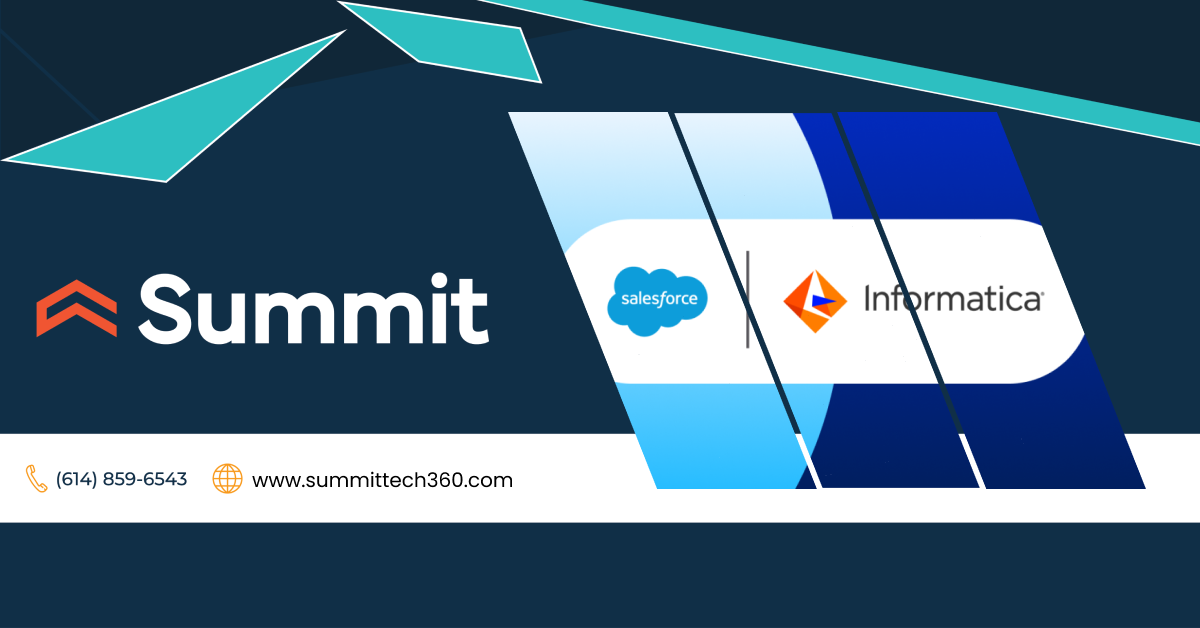Salesforce integration isn’t just a technical concern; it’s a business-critical driver of growth, performance, and ROI. In this post, you’ll learn what Salesforce integration is, how it impacts every area of your business, and the costly consequences of disconnected systems.
Introduction: What Salesforce Integration Is and Why It Matters
Salesforce is one of the most powerful business platforms in the world, but its business impact and ROI are heavily dependent on integration. Without it, Salesforce risks becoming an expensive silo rather than the growth engine it was intended to be.
Salesforce integration is the process of connecting Salesforce with ERP, finance, marketing, service, and analytics systems, enabling data to flow automatically in real time. When done well, it eliminates silos, manual entry, and errors, while providing teams with accurate, shared insights that enhance productivity, customer satisfaction, and profitability.
In this post, you’ll learn what Salesforce integration is, why it’s a business-critical driver of ROI and growth, and the costly warning signs that it’s time to take action.
The Staggering Costs of Disconnected Systems and Data Silos
Today, companies are running more applications than ever—an average of 1,000 or more—yet fewer than 30% are properly integrated, according to the Salesforce Connectivity report.
Many of these are diverse systems spanning a variety of functions, departments, and technologies, making integration even more complex.
The result? Disconnected systems that slow growth, derail digital transformation, and quietly drain millions from the bottom line.
The numbers tell a sobering story:
- $9.5 million lost annually in failed digital transformation efforts due to fragmented systems (Source: Salesforce Connectivity Report 2023)
- $3.1 trillion in lost revenue and productivity caused by data silos
(Source: JPMorgan – Collective Intelligence from Data Silos)
A Gatekeeper to Growth
Integration has become the critical gatekeeper to both AI adoption and modern customer experiences:
- 66% of organizations admit they don’t provide a fully integrated user experience.
- 95% of IT leaders cite integration as a roadblock to implementing AI effectively.
(Source: MuleSoft 2025 Connectivity Benchmark Report)
For business leaders, the message is clear: Salesforce integration isn’t just an IT problem. It’s a strategic business imperative that directly impacts revenue growth, customer experience, and competitive advantage.
What Is Salesforce Integration?
Salesforce integration is the process of connecting Salesforce with other business-critical systems, such as ERP, finance, marketing automation, customer service, and analytics, so that customer data is automatically synchronized across platforms in real-time. This eliminates silos, manual entry, and errors, while ensuring accurate and up-to-date visibility into customer interactions and activities across the business.
When Salesforce is properly integrated, it becomes more than a CRM—it becomes the connected backbone of your operations and a trusted single source of truth. Data flows seamlessly across departments: sales gains real-time context to close deals faster, marketing leverages insights to run more effective and personalized campaigns, service teams resolve issues quickly with a complete history, finance forecasts with confidence, and leadership makes better decisions with unified, real-time insights.
The outcome: higher productivity, more effective sales and marketing, faster issue resolution, improved customer satisfaction, trusted insights, and a scalable foundation for automation, AI adoption, and sustainable growth.

Why Effective Salesforce Integration is Critical to Business Success
The Central Role of Salesforce in Your Tech Ecosystem
While the previous statistics highlight the negative impact of various disconnected systems across organizations, the consequences are particularly severe with Salesforce. Among all business platforms, Salesforce sits at the center of how modern enterprises sell, market, and serve customers.
When Salesforce connects with ERP, finance, marketing automation, customer service, and AI platforms (or any critical external system), it becomes a true accelerator of growth. The Salesforce platform provides the foundation for real-time data transmission and integration with other systems, supporting seamless interoperability and communication.
Without those connections, it turns into just another silo, undermining adoption, eroding ROI, and frustrating leaders, teams, and customers alike.
After guiding more than 1,000 Salesforce deployments, our team has consistently observed two divergent outcomes:
- Integrated Salesforce becomes a growth engine, accelerating revenue, improving retention, and enabling confident scaling through seamless data flow.
- Disconnected Salesforce becomes a liability, another data silo that slows momentum and undermines innovation, while increasing the total cost of ownership.
Effective Salesforce integration is no longer optional. It’s the difference between Salesforce as the core catalyst of growth or a drain on resources.
The Business Impact of Poor Salesforce Integration
Disconnected systems cost far more than frustration: they drain measurable business value across your entire organization. The data shows a clear story of how poor integration affects every department:
- Selling Time Shrinks by 21%: Sales representatives spend over one-fifth of their week—nearly a full workday every month—searching for customer data instead of selling. This translates directly to reduced pipeline generation and lost revenue opportunities. (Salesforce)
- Customer Service Costs Climb: When agents lack complete customer context, resolution times are 43% longer, driving up labor costs and increasing the likelihood of customer churn. Each disconnected system adds another barrier between your team and customer satisfaction.
- Marketing ROI Erodes Significantly: Without unified data, campaigns fly blind. Targeting becomes generic, attribution remains fuzzy, and marketing spend can’t be tied to revenue. This creates a perpetual cycle of uncertain investment and questionable returns.
- Data Quality Collapses. Salesforce reports that insufficient data costs businesses over $ 700 billion annually. In addition:
- 90% of databases contain incomplete information
- 25% contain duplicates
- ~21% contain outdated or dead records
These data quality issues directly undermine conversion rates, forecasting accuracy, and customer experience.

The Compounding Effect of Poor Salesforce Integration Across Your Business
The ripple effect extends throughout the organization, resulting in fewer closed deals, higher support costs, weaker marketing performance, and shrinking profit margins.
Instead of amplifying capabilities, poor Salesforce integration drags performance down across every department. For example, when even two systems—such as your marketing automation platform and CRM—are not properly integrated, bottlenecks and inefficiencies can quickly arise, impacting sales, marketing, and support teams alike. This creates a negative feedback loop that becomes increasingly difficult to break. The cost of inaction compounds quarter after quarter.
Warning Signs and Costly Mistakes to Avoid
Integration problems don’t always appear as dramatic system failures. More often, they show up quietly: missed forecasts, frustrated teams, or rising customer churn. Left unaddressed, these warning signs compound into costly mistakes that can quietly drain millions in ROI.
Leadership and Financial Red Flags
- Conflicting Dashboards Paralyze Decision-Making: When executives and managers can’t trust “the numbers” because different systems show different results, decision paralysis sets in, slowing your business’s ability to respond to market changes.
- Forecast Accuracy Deteriorates: As spreadsheets and workarounds creep back in to compensate for integration gaps, your ability to predict business outcomes becomes increasingly unreliable.
- Strategic Initiatives Stall: New product launches, acquisitions, or business model changes slip behind schedule because integration backlogs prevent systems from adapting to new requirements. Building new integrations for these changing business needs can be time-consuming and resource-intensive, especially if not planned for scalability.
- Compliance Exposure Increases: Manual exports, unauthorized data transfers, and shadow spreadsheets create significant regulatory and security vulnerabilities that may not be apparent until an audit or breach occurs.
Revenue and Operational Warning Signs
- Sales Velocity Slows: Representatives toggle between Salesforce, spreadsheets, email, and chat to reconstruct account information, as manual data entry consumes selling time and extends sales cycles. Without integration and automated API calls between Salesforce and other systems, sales representatives are forced to manually transfer data, which reduces efficiency.
- Customer Friction Rises: Support agents lack complete customer context, forcing customers to repeat information and wait longer for resolution; siloed systems become a primary driver of customer dissatisfaction.
- Marketing Effectiveness Suffers: Without a true Customer 360 view, targeting remains broad, attribution becomes fuzzy, and credibility suffers when marketing spend can’t be clearly tied to pipeline or revenue impact.
Cultural and Adoption Challenges
- IT Firefighting Replaces Strategic Work: When sync jobs fail, data drifts, and incident response consumes technical resources, your IT team becomes trapped in tactical repairs rather than enabling business growth.
- Shadow Systems Proliferate: As users perceive Salesforce as requiring “extra steps,” they create workarounds through side systems, personal spreadsheets, and manual tracking methods, which further fragment your data.
- Technical Debt Accumulates: Duplicates and stale records undermine every report, forecast, and customer interaction, creating a compounding negative effect that becomes increasingly expensive to address.
Individually, these issues seem manageable. Together, they create a cascade of problems that erode confidence, stall growth, and drain the return on your Salesforce investment.
Recognizing these warning signs is the first step toward transforming your Salesforce implementation from a source of friction to a driver of growth.
How Effective Salesforce Integration Creates Competitive Advantages
Effective Salesforce integration transforms CRM from a standalone tool into the digital backbone of your business. Integrating Salesforce with internal and third-party systems enables organizations to unify data and processes across the entire business ecosystem.
When approached strategically, it delivers measurable improvements across departments while creating barriers to competition.
Cross-Functional Impact that Improves Business Performance
- Sales: Close deals faster and expand accounts with full customer context. Integrations with mobile, VoIP, and productivity tools eliminate friction in every customer interaction.
- Finance: Gain real-time revenue visibility and accurate forecasts through Salesforce–ERP integrations. Connections with QuickBooks, NetSuite, and other financial systems remove manual reconciliation and errors.
- Marketing: Improve campaign effectiveness by tying spend directly to pipeline and bookings. HubSpot, Marketo, and Mailchimp integrations enable personalization, more intelligent targeting, and clearer attribution. Integrating external apps with Salesforce also unifies data from various sources, enabling more personalized campaigns and deeper customer insights.
- Service: Strengthen loyalty with a 360° view of customer history. Integrated VoIP and service platforms reduce handling times and accelerate resolution cycles.
- Leadership: Access a single, trusted view of performance across functions—and the agility to act on opportunities with confidence.
Effective Salesforce integration also helps businesses save time and enhance both employee and customer satisfaction. Automating data entry, streamlining workflows, and reducing manual effort enables teams to focus on higher-value work, ultimately creating a better overall customer and employee experience.
AI Advantages
Integration is the gateway to unlocking AI’s full potential. Without connected systems, AI delivers only a fraction of its value.
Salesforce research shows that once generative AI is implemented on properly integrated systems:
- Employee productivity rises by ~30%
- Labor costs drop by ~19% (about $11,000 per employee, annually)
- 23% of employees are redeployed to higher-value work, with 88% of CHROs reporting redeployment is more cost-effective than external hiring (Salesforce)
The takeaway: Salesforce integration + AI redefines workforce strategy, cost structure, and growth potential, giving integrated organizations a significant competitive edge.
Connected vs. Siloed Outcomes: The Performance Gap
Function |
Connected Outcomes |
Siloed Consequences |
Sales |
Faster deals, higher account value with seamless tool integration | Slow decisions, wasted time reconciling systems |
Finance |
Real-time revenue and forecast accuracy through Salesforce–ERP |
Conflicting, outdated reports |
Marketing |
Clear ROI and pipeline impact attribution |
Spend disconnected from business results |
Service |
Unified experiences, lower churn rates |
Broken handoffs, rising escalations |
Leadership |
Trusted 360° view, faster market action |
Fragmented data, lost momentum |

Conclusion: Unlocking Growth and ROI with Salesforce Integration
Effective Salesforce integration isn’t just about connecting systems; it’s about optimizing performance, growth, and ROI by ensuring data flows seamlessly across your business.
Companies that prioritize integration as a business strategy experience faster sales cycles, more effective marketing, stronger customer relationships, and leadership teams that act on trusted, real-time insights.
When Salesforce is fully integrated with the systems that drive your business, it stops being another platform to maintain. It becomes the single source of truth, driving alignment, agility, and scalable success.
Ready to Get More from Salesforce?
At Summit, we’ve guided hundreds of organizations through this shift. Our comprehensive Salesforce integration services deliver tangible outcomes: streamlined operations, confident decision-making, higher customer and employee satisfaction, and stronger financial performance.
If you’re ready to realize the full value of Salesforce by connecting it with your most critical systems, contact our Summit team. Together, we’ll design an integration strategy that drives your growth, performance, and sustainable success.





























